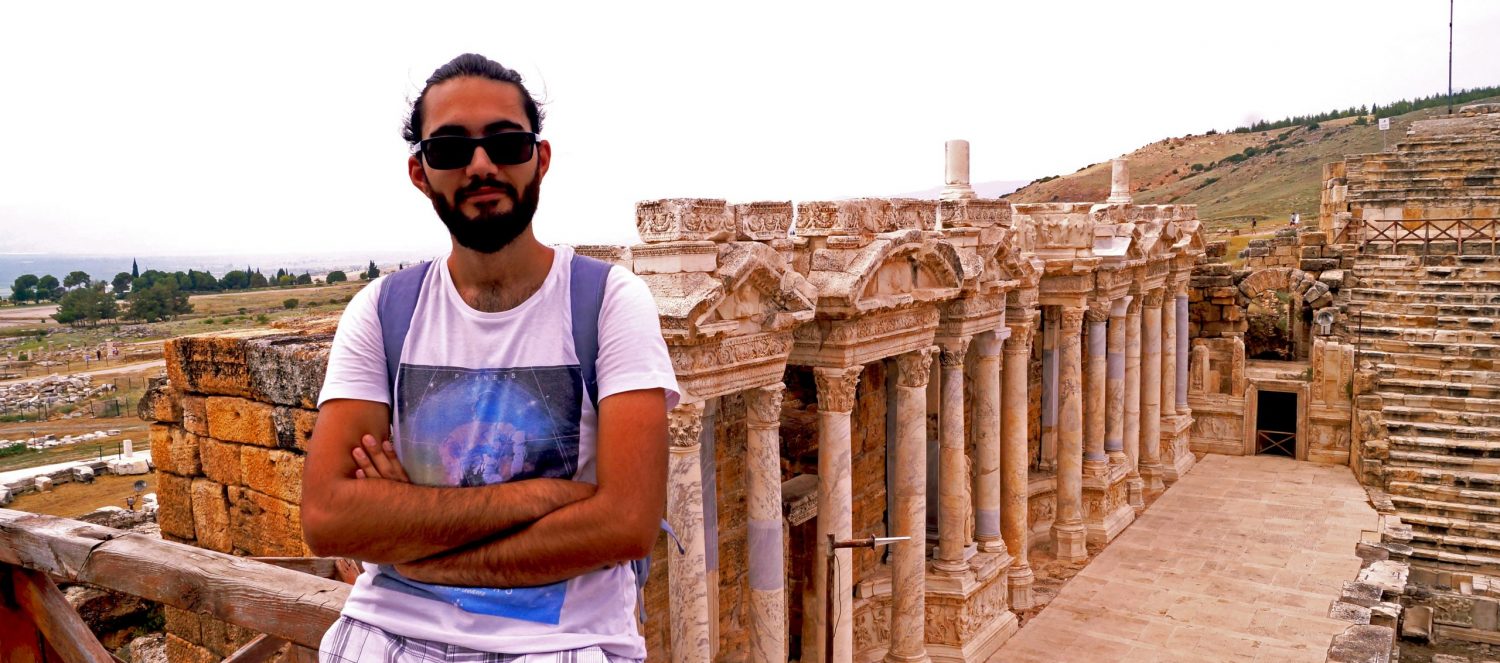Rock classification for NATM is different from RMR and Q. Types of rock are A1, A2, B1, B2, B3, C1, C2, C3, C4, C5. Strength of rock decreases from A1 to C5; that is, most durable rock type is A1. Generally, tunnels are separated into two types called as invert and non-invert. Type of tunnel is determined by rock type. Until B3, tunnels are non-invert. After B3, tunnels are invert. Moreover, according to rock type, whether forepoles are placed or not, thickness of shotcrete and how much distance proceed in a day etc. are determined. Types of support used for tunnel are shotcrete, mesh reinforcement, rock bolt, steel beam and forepole.
General principles for NATM are
1) Tunnel excavation should be designed by considering that rocks around tunnel can support tunnel design with a maximum efficiency.
2)Support systems placed around the tunnel should be designed by allowing the elastic deformations of rocks around the tunnel and preventing rocks from relaxing at the same time. This is very critical.
3)Support systems designed for the tunnel should be followed by site measurements to decide whether it is enough or not. If deformation amount falls into desired value; that is, smaller than 2mm per month, final lining can be done.
Tunnel Modeling in Phase2 Software by Considering NATM
Deformation which occur in underground excavations has a three-dimensional character. Detailed figure is given below. However, Phase2 software works on two-dimensional coordinate system, so this three-dimensional deformation should be transferred to two-dimension with a best way. To reduce three-dimensional deformation, at each step how much radial displacement occur should be known. At this point, deformation of tunnel face is more important. Therefore, support system designed for tunnel should resist the force which is formed by difference between deformation of tunnel face and final deformation expected. When model of tunnel is formed by Phase2, number of steps should be more to consider all effects and deformations in real life.
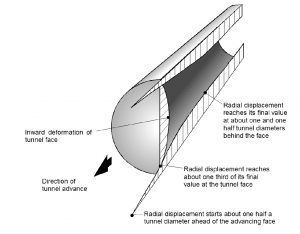
Figure: Pattern of deformation in the rock mass surrounding an advancing tunnel (Hoek,2000)
As an example, step by step modeling of single tube non-invert tunnel is given below. There are 11 steps in a model. There is only one material. According to three conditions, different parameters were defined for a material in software.

Stage 1
1) Before tunnel excavation, general model is formed. There is no any deformation at this point. Tunnel excavation is divided into two parts. First, upper part of tunnel will be excavated; and then, bottom part will be excavated.
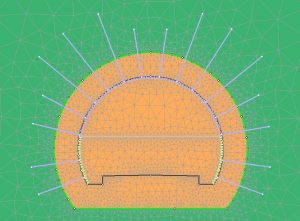
Stage 2
2) To reflect real behavior of this tunnel excavation, rock on the tunnel face and around of the tunnel is assumed as disturbed. For this area, low rock parameters are defined.
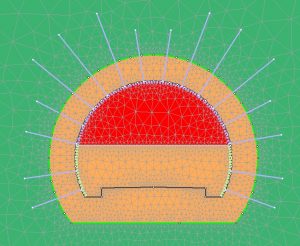
Stage 3
3) To decrease the strength of the rock, reduction coefficient is applied to the rock at the upper part. By doing this, all deformations can occur at the upper part before placing support systems, so these deformations do not create any force on the supports.

Stage 4
4) Excavation of the upper part is completed. After that, shotcrete is placed, and rock bolts are put. 100 percent of strength of shotcrete is not given at the same time. To make more realistic, strength of shotcrete will be increased step by step.

Stage 5
5) At this stage, strength of shotcrete is increased in some degree. There is no any change other than this.

Stage 6
6) Like stage 3, reduction factor is applied for bottom rock. All deformations can occur before placing support systems.

Stage 7
7) Excavation of bottom part is completed. After that, shotcrete with lowest strength parameters is placed, and rock bolts are put.
8) Strength of shotcrete is increased in some degree.
9) In upper and bottom part strength of shotcrete approaches final value.
10) Final lining is completed. In the long term it is assumed that rock bolts lose their strength.
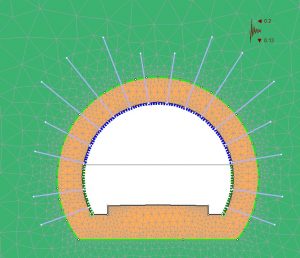
Stage 11
11) Horizontal and vertical seismic forces affect the system.
Reference: Hoek, E. (2000). Practical rock engineering.
